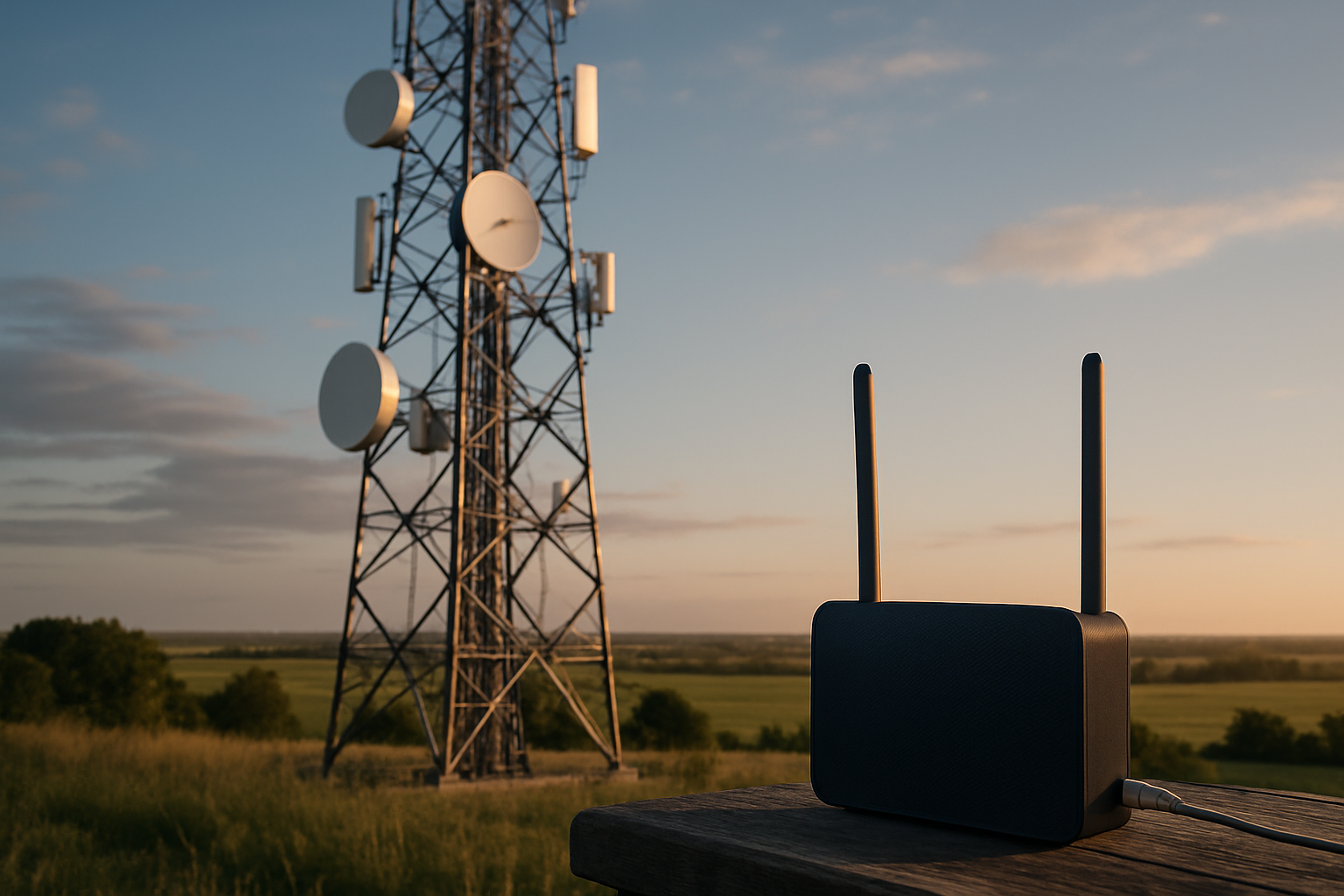Satellite Swarms: The Silent Overhaul of Our Communication Networks
Space-based internet isn't new, but the scale and approach being taken by the latest generation of satellite networks is unlike anything we've seen before. Traditional satellite internet relied on a handful of massive, expensive satellites positioned in geostationary orbit. Today's satellite internet companies are taking a radically different approach: deploying thousands of smaller, cheaper satellites in low Earth orbit, creating constellations that blanket the globe in high-speed connectivity. This shift represents one of the most significant transformations in telecommunications infrastructure since the laying of transoceanic cables, yet it's happening largely out of sight, 340 miles above our heads.

The dawn of mega-constellations
The concept of satellite internet has existed since the early 1990s, but the current revolution began in earnest around 2015 when SpaceX announced its ambitious Starlink program. Unlike traditional communications satellites that orbit 22,236 miles above Earth in geostationary orbit, these new networks operate much closer to home, between 340-1,200 miles up in low Earth orbit (LEO).
This proximity solves the biggest problem that plagued earlier satellite internet: latency. Signals traveling to geostationary satellites and back face a minimum round-trip time of about 550 milliseconds – an eternity in internet terms and completely unsuitable for applications like video calls or online gaming. LEO constellations cut this delay to around 20-40 milliseconds, comparable to many ground-based broadband services.
The trade-off is that LEO satellites move quickly relative to the ground (completing an orbit in about 90 minutes), meaning a single satellite can only provide service to a specific area for a few minutes before disappearing over the horizon. The solution? Deploy thousands of satellites to ensure continuous coverage – a fundamental shift in satellite architecture.
Today’s satellite landscape
The current LEO broadband race has several major players, though SpaceX’s Starlink has established a commanding lead. As of mid-2023, Starlink has deployed over 4,500 satellites and serves more than 1.5 million customers globally. The company continues launching approximately 40 satellites weekly, with plans for a final constellation of up to 42,000 satellites.
OneWeb, despite bankruptcy restructuring in 2020, has deployed over 600 satellites and plans a constellation of 648. Amazon’s Project Kuiper has yet to launch operational satellites but holds FCC approval for 3,236 satellites and has secured 83 rocket launches to deploy its network. The company recently completed successful tests of prototype satellites.
China is rapidly developing its own mega-constellation called Guowang (or SatNet), with plans for 13,000 satellites. Several other companies and countries have announced similar initiatives, though at smaller scales.
These networks aren’t cheap. SpaceX has invested billions in Starlink, with each launch costing approximately $15-20 million. Individual satellites cost roughly $250,000-$500,000 each. For customers, Starlink hardware runs $599 with monthly service fees of $110 in most markets – pricing that remains too high for many rural users who most need improved connectivity.
Technical challenges and innovations
Creating functional satellite mega-constellations requires solving numerous complex technical problems. Modern LEO satellites are marvels of miniaturization, packing sophisticated phased array antennas, high-power solar arrays, ion thrusters, and advanced computing systems into packages weighing 200-300kg.
Inter-satellite laser links represent perhaps the most significant technical advancement in these networks. By connecting satellites directly via laser, data can travel through space – where light moves faster than through fiber-optic cables – before reaching ground stations. This dramatically reduces latency for long-distance communications and allows service in remote regions without nearby ground stations.
Spectrum management presents another challenge. With thousands of satellites sharing limited frequency bands, sophisticated coordination is required to prevent interference. Similarly, tracking and avoiding collisions between satellites and space debris has become increasingly complex as orbital space grows more crowded.
The ground equipment has evolved substantially as well. Early Starlink terminals used motors to physically move the dish for optimal alignment. Newer models employ electronically steered phased array antennas that can track satellites without moving parts, improving reliability while reducing costs.
Environmental and astronomical impact
The rapid deployment of these mega-constellations has raised significant concerns among astronomers. The satellites can create bright streaks across telescope images, potentially interfering with scientific observations. SpaceX has experimented with darkening treatments and visors to reduce reflectivity, but challenges remain, particularly for wide-field observatories and those operating at dawn and dusk.
Space sustainability experts worry about orbital crowding and collision risks. While LEO satellites naturally deorbit within 5-10 years if their propulsion fails, the sheer number being launched increases collision probabilities. A chain-reaction collision event (known as Kessler Syndrome) remains a low but concerning possibility that could render certain orbital regions unusable.
The environmental impact extends to Earth as well. Rocket launches contribute to upper atmosphere pollution, and the eventual disposal of thousands of satellites raises questions about space debris management. Some experts have called for more comprehensive international regulations governing large satellite deployments.
The future of connectivity
Despite these challenges, satellite mega-constellations are rapidly becoming a critical component of global communications infrastructure. Their most transformative impact may be in regions traditionally underserved by terrestrial networks – rural areas, developing nations, and remote locations where laying fiber is prohibitively expensive.
Maritime and aviation connectivity represents another major application. Cruise ships, commercial vessels, and airlines are integrating these new satellite services to provide passengers and crew with reliable broadband previously unavailable or exorbitantly priced.
As competition increases and technology matures, costs should decrease. SpaceX is already experimenting with a more affordable “mini” terminal, and future iterations may bring equipment costs below $100, making satellite internet accessible to millions more users worldwide.
The longer-term vision extends beyond simple internet access. These satellite networks could form the backbone of advanced IoT systems, autonomous vehicle communications, and edge computing networks operating on a truly global scale – potentially changing how we think about connectivity and distributed computing.
The quiet satellite revolution happening above our heads may not capture public attention like AI or smartphones, but its impact on global communications infrastructure and digital access may ultimately prove just as profound.





